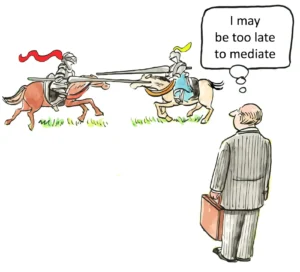What Evidence is Crucial in Cybercrime Defense Cases?
In the rapidly evolving landscape of criminal law, digital evidence has become the cornerstone of both prosecution and defense strategies in cybercrime cases. As we navigate through 2025, the complexity of these cases continues to increase, with technological advancements creating both new opportunities and challenges for legal practitioners. The critical nature of properly collected, preserved, and analyzed digital evidence cannot be overstated in cybercrime defense strategies. Understanding what evidence is crucial and how to effectively challenge it forms the foundation of a robust defense against allegations of computer-related offenses.
The digital realm presents unique challenges for evidence collection and authentication that traditional criminal cases do not encounter. Unlike physical evidence, digital data can be easily altered, duplicated, or destroyed without leaving obvious traces. This characteristic makes the integrity and handling of digital forensic evidence paramount in cybercrime prosecutions and defenses. As courts become more sophisticated in their understanding of digital technologies, the standards for admissibility of such evidence continue to evolve, creating a dynamic legal environment that defense attorneys must navigate with precision and expertise.
Understanding Digital Evidence in Cybercrime Cases
Digital evidence encompasses a broad spectrum of electronically stored information that may be relevant to cybercrime allegations. This includes data extracted from computers, smartphones, servers, network logs, cloud storage, and various other digital sources. The nature of this evidence differs fundamentally from traditional physical evidence, requiring specialized knowledge and tools for proper collection, preservation, and analysis.
The value of digital evidence in cybercrime cases stems from its ability to establish timelines, demonstrate access patterns, reveal communications, and potentially link actions to specific individuals. However, this same evidence can also be misinterpreted, manipulated, or compromised during the investigative process. Defense attorneys must understand both the technical aspects of digital evidence and the legal standards governing its admissibility to effectively represent clients facing cybercrime charges.
Digital evidence typically falls into several categories, including stored communications, metadata, system logs, internet history, transaction records, and user-generated content. Each type presents unique challenges for authentication and interpretation. For instance, metadata may reveal when a file was created or modified, but questions about who actually performed those actions often remain open to interpretation and challenge. Understanding these nuances is essential for developing effective defense strategies that question the reliability and relevance of the prosecution’s digital evidence.
The Role of Computer Forensics in Defense Strategy
Computer forensics plays a pivotal role in both building and challenging cases involving digital evidence. This specialized field focuses on the recovery, authentication, and analysis of data from digital devices using scientifically validated methods. For defense attorneys, working with qualified forensic experts can provide crucial insights into potential weaknesses in the prosecution’s evidence and alternative explanations for digital artifacts.
Forensic analysis can establish critical timelines that either support or contradict the prosecution’s narrative. By examining system logs, file metadata, and access records, experts can reconstruct a sequence of events that may reveal inconsistencies in the alleged timeline of criminal activity. This temporal analysis can be particularly powerful in creating reasonable doubt about a defendant’s involvement in the alleged cybercrime.
Beyond timeline analysis, computer forensics can uncover evidence of third-party access, system vulnerabilities, or malware that might explain seemingly suspicious activities. For example, the presence of remote access tools or security vulnerabilities could support arguments that unauthorized users—not the defendant—were responsible for the activities in question. These alternative explanations form a crucial component of many cybercrime defense strategies, particularly in cases involving unauthorized access or data breaches.
Challenging the Integrity of Digital Evidence
One of the most effective defense strategies in cybercrime cases involves challenging the integrity of the prosecution’s digital evidence. This approach focuses on questioning whether proper procedures were followed during the collection, storage, and analysis of electronic data. Any deviation from established forensic standards can potentially undermine the reliability and admissibility of such evidence.
The chain of custody for digital evidence requires meticulous documentation from the moment of seizure through analysis and presentation in court. Defense attorneys should scrutinize this chain for any gaps or irregularities that might suggest opportunities for tampering or contamination. Questions about who had access to the evidence, how it was stored, and what safeguards were in place to prevent alteration can raise significant doubts about its reliability.
Technical challenges to digital evidence might include arguments about improper imaging techniques, failure to use write-blockers to prevent modification, or the use of outdated or unvalidated forensic tools. These technical deficiencies can be particularly effective when supported by expert testimony explaining how such errors might affect the integrity of the evidence. Courts increasingly recognize the importance of proper forensic procedures, making these challenges more viable than in the early days of cybercrime prosecution.
Authentication and Admissibility Challenges
For digital evidence to be admissible in court, it must be properly authenticated—that is, shown to be what its proponent claims it is. This requirement presents particular challenges in the digital realm, where data can be easily manipulated or misattributed. Defense strategies often focus on questioning whether the prosecution has adequately established the authenticity of key digital evidence.
Authentication challenges might include questioning the source of digital data, the methods used to collect it, or the possibility of alteration before analysis. For example, defense attorneys might argue that email headers can be spoofed, metadata can be modified, or that multiple users had access to the device in question, making it impossible to attribute actions to a specific individual with certainty.
The legal standards for admissibility of digital evidence continue to evolve as courts grapple with technological complexities. While most jurisdictions base their approaches on the Federal Rules of Evidence, interpretations vary significantly. Defense attorneys must stay current on relevant case law and jurisdictional variations to effectively challenge the admissibility of digital evidence that fails to meet established standards.
Establishing Reasonable Doubt Through Alternative Explanations
A cornerstone of criminal defense strategies in cybercrime cases involves presenting alternative explanations for the digital evidence presented by the prosecution. This approach seeks to establish reasonable doubt by demonstrating that innocent or alternative scenarios could explain the same digital artifacts without implicating the defendant in criminal activity.
Alternative explanations might include arguments about shared access to devices or accounts, the possibility of remote compromise through malware or hacking, or innocent explanations for seemingly suspicious activities. For example, defense attorneys might argue that multiple family members used the same computer, that the defendant’s credentials were stolen through a phishing attack, or that certain software was installed for legitimate purposes despite having dual-use capabilities.
Developing credible alternative explanations typically requires collaboration with technical experts who can analyze the evidence and identify plausible scenarios consistent with the digital artifacts but inconsistent with criminal intent. These experts can help translate complex technical concepts into understandable narratives that resonate with judges and juries who may have limited technical background. The goal is not necessarily to prove these alternative explanations definitively but to establish that reasonable doubt exists about the prosecution’s interpretation of the evidence.
The Importance of Expert Witnesses in Cybercrime Defense
Expert witnesses play a crucial role in cybercrime defense cases, providing specialized knowledge that helps judges and juries understand complex technical evidence. These experts can explain digital forensic concepts, evaluate the prosecution’s methodology, offer alternative interpretations of the evidence, and identify potential issues with the investigation that might not be apparent to non-specialists.
Selecting the right expert witnesses requires careful consideration of their qualifications, experience, and ability to communicate effectively with non-technical audiences. Experts should have relevant certifications, practical experience in the specific technologies at issue, and ideally, previous experience testifying in similar cases. Their credibility and ability to withstand cross-examination can significantly impact how their testimony is received.
Expert testimony can address various aspects of digital evidence, including the limitations of forensic tools, alternative explanations for digital artifacts, proper investigative procedures, and the significance of specific findings. By contextualizing technical information and highlighting uncertainties or limitations in the prosecution’s evidence, expert witnesses can substantially strengthen the defense’s position and create reasonable doubt about the defendant’s culpability.
Consent and Authorization as Defense Strategies
In many cybercrime cases, particularly those involving unauthorized access to computer systems, consent and authorization can serve as complete defenses. If the defendant had permission to access the system or data in question, a critical element of the offense may be negated. Defense strategies often focus on establishing that such authorization existed, either explicitly or implicitly.
Explicit authorization might be demonstrated through employment agreements, terms of service, or direct communications granting permission. Implicit authorization can be more challenging to establish but might be inferred from patterns of behavior, organizational practices, or the absence of clear restrictions. For example, if an employee regularly accessed certain systems as part of their job duties without objection, this might support an argument that such access was authorized even without explicit documentation.
Challenges in this area often involve questions about the scope of authorization—whether the defendant exceeded permitted access by using authorized credentials for unauthorized purposes. Courts have reached varying conclusions on these questions, with some adopting narrow interpretations that focus on access restrictions rather than use restrictions. Defense attorneys must carefully analyze relevant precedent in their jurisdiction to develop effective arguments based on authorization defenses.
Insufficient Evidence and Technical Limitations
A fundamental defense strategy in any criminal case involves challenging whether the prosecution has met its burden of proof beyond a reasonable doubt. In cybercrime cases, this often means highlighting the technical limitations of digital evidence and the inherent uncertainties in attributing online activities to specific individuals.
Digital evidence frequently suffers from attribution problems—difficulties in conclusively linking online activities to a particular person rather than just to a device or account. Defense attorneys can emphasize that IP addresses identify devices rather than users, that passwords can be shared or stolen, and that digital forensics cannot always distinguish between different users of the same device. These limitations can create significant reasonable doubt about who actually performed the actions in question.
Technical limitations of forensic tools and methodologies also provide avenues for challenge. No forensic tool captures all available data, and each has known limitations and error rates. By highlighting these limitations and questioning whether the investigation considered alternative explanations or followed all relevant leads, the defense can argue that the evidence is insufficient to support a conviction beyond reasonable doubt.
Challenging Search and Seizure Procedures
Constitutional protections against unreasonable searches and seizures apply to digital evidence just as they do to physical evidence. Challenging the legality of how digital evidence was obtained represents a potentially powerful defense strategy that could result in the suppression of key prosecution evidence.
Search warrants for digital devices must particularly describe the places to be searched and items to be seized. Given the vast amounts of data stored on modern devices, courts increasingly require warrants to specify what types of data investigators may examine rather than allowing unlimited access to all contents. Defense attorneys should scrutinize warrants for overbreadth or lack of particularity that might render them constitutionally deficient.
Even with a valid warrant, the execution of digital searches must be reasonable. This includes questions about whether investigators exceeded the scope of the warrant, whether they employed appropriate minimization procedures to avoid examining irrelevant private data, and whether they properly documented their search methodology. Successful challenges to search procedures can result in the exclusion of evidence obtained improperly, potentially undermining the prosecution’s entire case.
Metadata Analysis and Timeline Construction
Metadata—data about data—provides crucial context for digital evidence and can be both a powerful tool and a significant vulnerability in cybercrime cases. This includes information such as creation and modification timestamps, author information, geolocation data, and system logs that record access and activities.
Defense strategies often involve detailed analysis of metadata to challenge the prosecution’s timeline or attribution claims. For example, file timestamps might contradict allegations about when certain activities occurred, or metadata inconsistencies might suggest tampering or mishandling of evidence. Thorough metadata analysis can reveal discrepancies that undermine the prosecution’s narrative.
However, metadata itself has limitations that defense attorneys can highlight. Timestamps can be affected by system clock settings, time zone configurations, or deliberate manipulation. Author information can be misleading if multiple users share accounts or if default settings automatically populate certain fields. By emphasizing these limitations, defense attorneys can question whether metadata provides reliable evidence of the defendant’s involvement in alleged criminal activities.
Network Forensics and Traffic Analysis
In cases involving network-based activities such as hacking, network forensics examines evidence from network devices, traffic captures, and logs to reconstruct what occurred. This specialized area of digital forensics presents both opportunities and challenges for cybercrime defense.
Network evidence can include firewall logs, intrusion detection system alerts, proxy server records, and packet captures that record actual data transmitted over networks. Defense strategies might involve questioning whether this evidence has been properly collected, preserved, and interpreted. For example, network logs typically record IP addresses rather than individual users, creating attribution challenges that can be exploited in defense arguments.
Technical limitations of network monitoring systems provide additional avenues for challenge. Most organizations do not capture and retain all network traffic due to storage limitations and performance concerns. This selective or incomplete monitoring creates gaps in the evidence that defense attorneys can highlight to question whether the full context of network activities has been considered. Additionally, encryption, anonymization tools, and the possibility of IP spoofing further complicate reliable attribution of network activities to specific individuals.
Cloud Computing and Jurisdictional Challenges
The rise of cloud computing has introduced new complexities in cybercrime cases, particularly regarding jurisdiction, data ownership, and access authorization. These issues create novel defense opportunities that were not present in traditional computer crime cases.
Jurisdictional questions arise when data resides on servers in different states or countries than the defendant or the alleged victims. Defense attorneys can challenge whether law enforcement had proper authority to access or seize data stored in other jurisdictions, particularly when international boundaries are crossed. These challenges become even more complex when data is dynamically distributed across multiple locations using cloud technologies.
Questions about data ownership and control in cloud environments can also support defense arguments. When data is stored in shared cloud infrastructure, establishing who had access rights and control becomes more complicated than with traditional on-premises systems. Defense strategies might focus on the shared nature of cloud resources, the role of service providers in managing access, and the difficulty of attributing specific actions in multi-tenant environments where resources are pooled and reallocated dynamically.
Mobile Device Evidence and Challenges
Mobile devices generate unique forms of digital evidence that present both opportunities and challenges in cybercrime defense. Smartphones and tablets contain rich data sources including call logs, text messages, location history, app usage, and stored credentials that may be relevant to cybercrime allegations.
Defense strategies for mobile evidence often focus on authentication and attribution challenges. Multiple individuals might have access to a mobile device, either physically or through shared accounts and passwords. Location data might place a device at a particular location but cannot definitively establish who was using it at that time. These limitations can be leveraged to question whether the prosecution has established a sufficient link between the defendant and the alleged criminal activities.
Technical limitations of mobile forensics tools provide additional avenues for challenge. Encryption, remote wiping capabilities, and the rapid evolution of mobile operating systems create significant challenges for forensic examiners. Defense attorneys can question whether investigators used appropriate tools and methodologies for the specific devices involved and whether they considered alternative explanations for the data recovered.
Artificial Intelligence and Cybercrime Defense in 2025
As we move through 2025, artificial intelligence is transforming both cybercrime and the defensive strategies employed against it. AI systems are increasingly used to analyze digital evidence, identify patterns, and make predictions about user behavior. This technological evolution creates new considerations for cybercrime defense.
Defense strategies must now address the reliability and transparency of AI-based investigative tools. Questions about algorithm bias, validation methodologies, error rates, and the “black box” nature of some AI systems provide fertile ground for challenging evidence derived from these technologies. Defense attorneys can argue that without full transparency about how AI systems reach their conclusions, such evidence fails to meet standards for scientific reliability and admissibility.
Conversely, AI technologies also offer new opportunities for defense teams. Advanced analytics can help identify patterns in large datasets that support alternative explanations or highlight inconsistencies in the prosecution’s evidence. As these technologies become more accessible, they increasingly level the playing field between prosecution and defense resources in complex cybercrime cases.
Emerging Trends in Cybercrime and Defense Strategies
The cybercrime landscape continues to evolve rapidly, with new technologies and techniques emerging regularly. Defense attorneys must stay informed about these developments to effectively represent clients facing cybercrime allegations in 2025 and beyond.
The proliferation of cybercrime-as-a-service models has democratized access to sophisticated attack tools, making attribution increasingly difficult. Defense strategies can leverage this reality to question whether investigators have adequately considered the wide range of potential perpetrators with access to similar capabilities. The growing sophistication of these services means that technical indicators once useful for attribution are now widely shared among different threat actors.
The increasing use of deepfake technology creates new challenges for digital evidence reliability. Defense attorneys can question whether audio, video, or image evidence might have been synthetically generated or manipulated using AI tools that are now widely available. As these technologies improve, traditional methods of authenticating digital media become less reliable, potentially strengthening arguments about reasonable doubt in cases relying on such evidence.
Legal Standards for Digital Evidence Admissibility
The admissibility of digital evidence in court is governed by legal standards that continue to evolve as technology advances. Understanding these standards is essential for developing effective challenges to prosecution evidence in cybercrime cases.
Most jurisdictions base their approach to digital evidence on traditional evidence rules, particularly those addressing relevance, authenticity, hearsay, and the best evidence rule. However, courts have adapted these principles to address the unique characteristics of digital information. Defense attorneys should be familiar with key precedents in their jurisdiction that establish specific requirements for digital evidence admissibility.
Authentication requirements for digital evidence typically focus on establishing that the information is what its proponent claims it is. This might involve testimony about collection methods, hash value verification to demonstrate integrity, or evidence establishing the chain of custody. By challenging whether these requirements have been met, defense attorneys can potentially exclude key prosecution evidence or at least diminish its perceived reliability.
Preparing Clients for Cybercrime Defense
Effective representation in cybercrime cases requires not only legal and technical expertise but also appropriate client preparation. Defendants facing cybercrime charges often have technical knowledge that can be valuable to their defense, but they may not understand the legal process or how best to assist their attorneys.
Early case assessment should include comprehensive discussions about the client’s technical background, their relationship to the systems or data involved, and any alternative explanations for the activities in question. Clients should be encouraged to provide detailed information about system access, password sharing practices, and any security incidents they may be aware of that could support defense arguments.
Clients should also be advised about digital privacy considerations during the pendency of their case. This includes guidance about communications security, social media usage, and the potential for ongoing surveillance or monitoring. These precautions help prevent the creation of new evidence that might undermine defense strategies while ensuring that attorney-client communications remain privileged and secure.
Conclusion: The Future of Cybercrime Defense
As technology continues to advance, the landscape of cybercrime and digital evidence will undoubtedly continue to evolve. Defense attorneys must remain vigilant in updating their knowledge and adapting their strategies to address new challenges and opportunities in this dynamic field.
The increasing complexity of digital systems means that specialized expertise will become even more crucial in cybercrime defense. Collaborative relationships with technical experts, forensic analysts, and researchers will be essential for developing effective defense strategies that can challenge increasingly sophisticated prosecution evidence and investigative techniques.
Despite these challenges, fundamental principles of criminal defense remain applicable: the prosecution bears the burden of proof beyond a reasonable doubt, defendants are presumed innocent, and evidence must meet established standards for reliability and admissibility. By combining these enduring legal principles with evolving technical knowledge, defense attorneys can continue to provide effective representation in even the most complex cybercrime cases, ensuring that justice is served in this rapidly changing domain.
Websites Used for This Article
- https://barkanresearch.com/cybercrime-defenses/
- https://www.muscalaw.com/blog/cybercrime-defense-digital-age-critical-role-florida-criminal-defense-attorneys
- https://www.christagrosheklaw.com/blog/2024/04/defense-strategies-for-cybercrimes/
- https://www.lawinfo.com/resources/criminal-defense/computer-crime/defending-against-computer-crimes.html
- https://explodingtopics.com/blog/ai-cybersecurity
- https://www.weforum.org/stories/2023/10/cybercrime-violent-crime/
- https://cybercentaurs.com/blog/strategies-for-defending-against-cyber-crime-allegations/
- https://www.amu.apus.edu/area-of-study/criminal-justice/resources/what-is-digital-forensics-in-criminal-justice/
- https://www.hdezlaw.com/blog/2024/05/defense-strategies-in-cases-involving-digital-crimes/
- https://www.fawco.org/global-issues/education/education-articles/5085-top-eight-cyber-crime-trends-you-should-prepare-for-in-2025
- https://nyccrimelawyer.com/what-forensic-evidence-is-critical-in-defending-someone-charged-with-a-cybercrime/
- https://www.unodc.org/e4j/en/cybercrime/module-3/key-issues/the-role-of-cybercrime-law.html
- https://www.sikich.com/insight/the-role-of-digital-forensics-in-fighting-and-preventing-cybercrime/
- https://www.iacpcybercenter.org/investigators/digital-evidence/understanding-digital-evidence/
- https://www.splunk.com/en_us/blog/learn/digital-forensics.html
- https://www.justice.gov/doj/doj-strategic-plan/objective-24-enhance-cybersecurity-and-fight-cybercrime
- https://leppardlaw.com/federal/computer-crimes/evidence-collection-in-federal-computer-crime-cases/
- https://nij.ojp.gov/topics/forensics/digital-multimedia-evidence
- https://www.cisa.gov/combatting-cyber-crime
- https://www.unodc.org/e4j/zh/cybercrime/module-6/key-issues/handling-of-digital-evidence.html
- https://www.iacpcybercenter.org/officers/cyber-crime-investigations/digital-evidence/
- https://www.nsa.gov/portals/75/documents/what-we-do/cybersecurity/professional-resources/csi-nsas-top10-cybersecurity-mitigation-strategies.pdf
- https://online.champlain.edu/blog/chain-custody-digital-forensics
- https://sherloc.unodc.org/cld/en/education/tertiary/cybercrime/module-4/key-issues/digital-evidence.html
- https://sosafe-awareness.com/resources/reports/cybercrime-trends/
- https://www.steventituslaw.com/blog/cybercrime-defenses-against-hacking-identity-theft-and-more/
- https://www.weforum.org/stories/2024/11/collaboration-key-tackling-cybercrime-cybersecurity/
- https://www.simplilearn.com/top-cybersecurity-trends-article
- https://www.axiomlaw.com/guides/cyber-law
- https://blogs.microsoft.com/on-the-issues/2024/10/15/escalating-cyber-threats-demand-stronger-global-defense-and-cooperation/
- https://cybersecurityventures.com/cybercrime-news/
- https://yountslaw.com/what-defenses-are-possible-for-a-cyber-crime-charge/
- https://www.tandfonline.com/doi/full/10.1080/0735648X.2024.2323872
- https://www.cisa.gov/topics/cyber-threats-and-advisories
- https://www.justcriminallaw.com/criminal-charges-questions/2024/06/06/defense-against-charges-of-cybercrime-and-online-identity-theft/
- https://cloud.google.com/blog/topics/threat-intelligence/cybercrime-multifaceted-national-security-threat
- https://www.fbi.gov/investigate/cyber
- https://www.justice.gov/criminal/criminal-ccips/criminal-division-strategic-approach-countering-cybercrime
- https://cybersecurityventures.com/hackerpocalypse-cybercrime-report-2016/
- https://isalliance.org/time-to-modernize-the-militarys-role-in-cyber-crime-defense/













